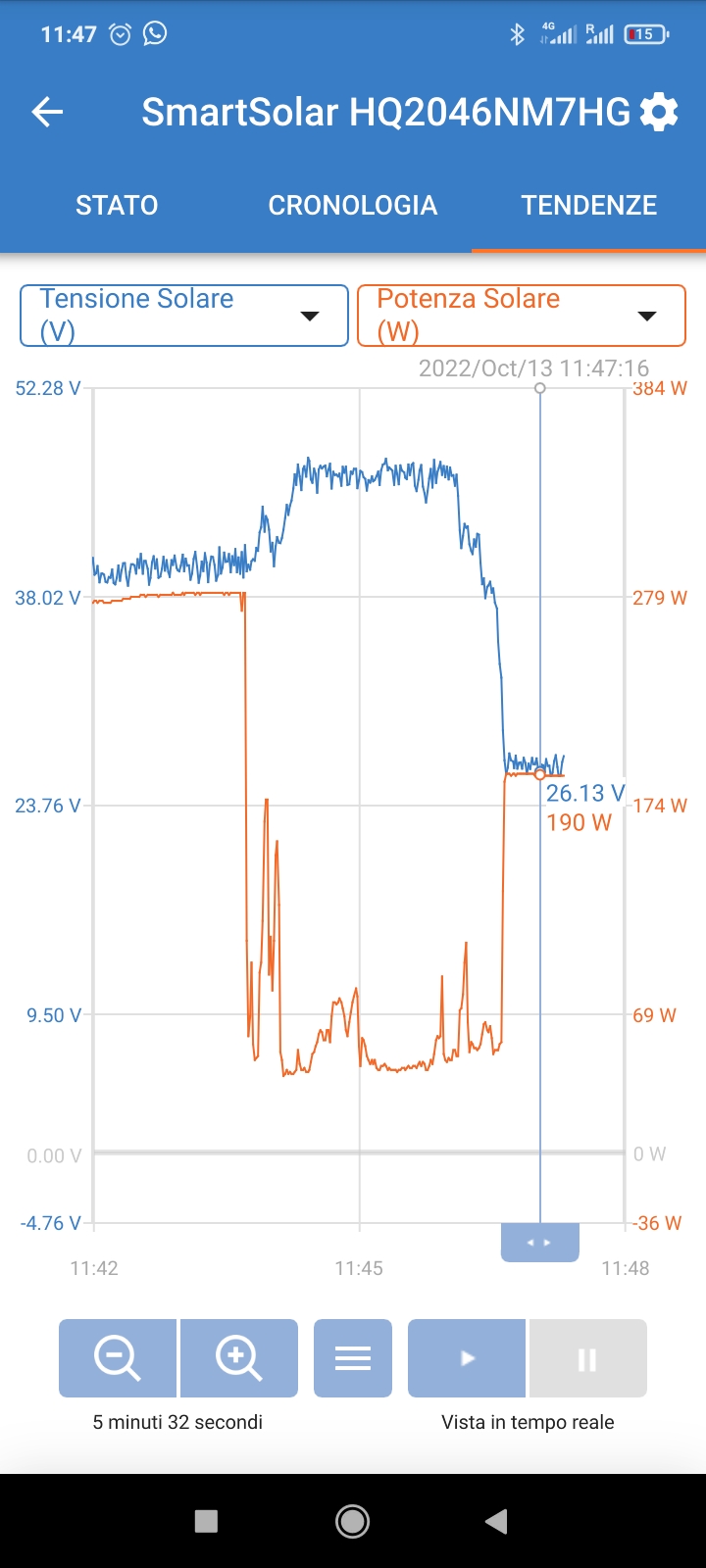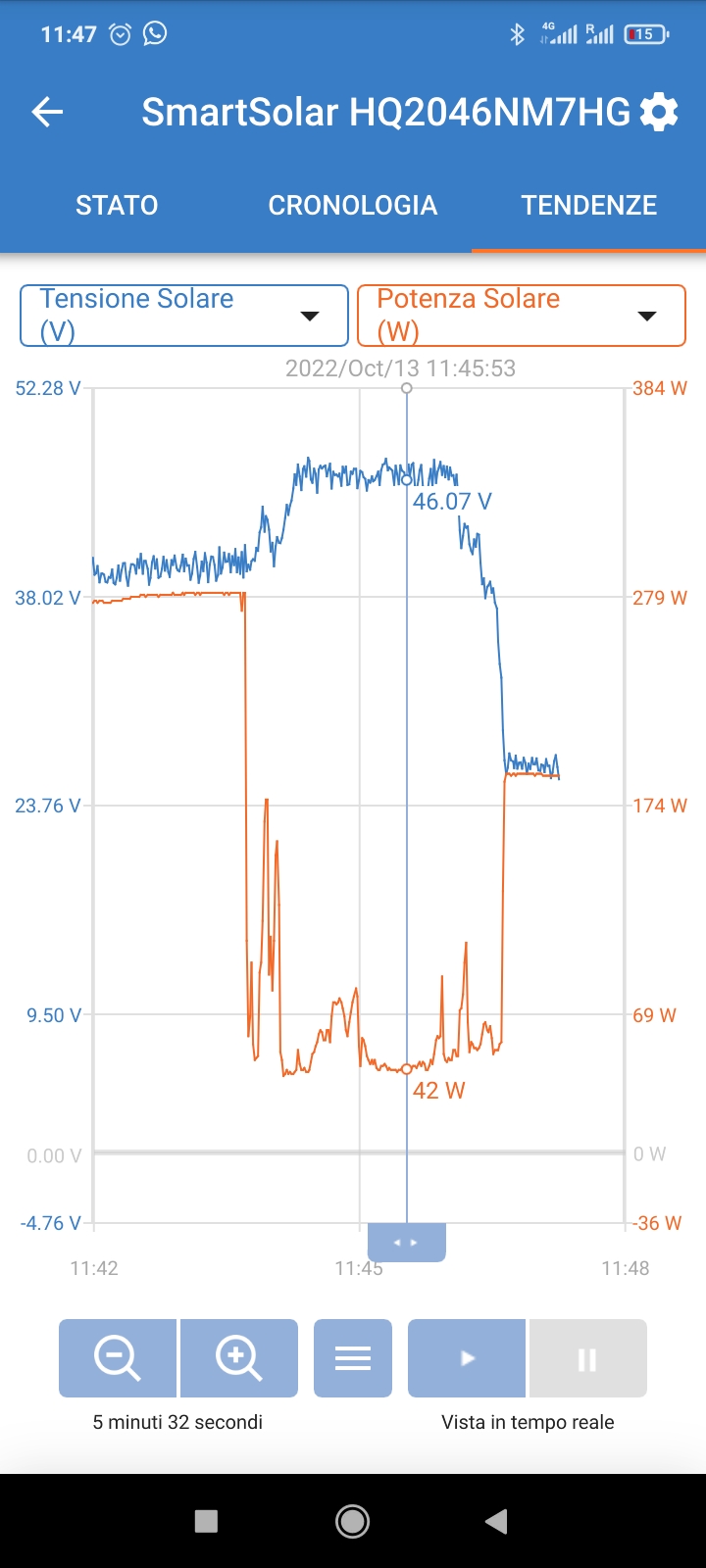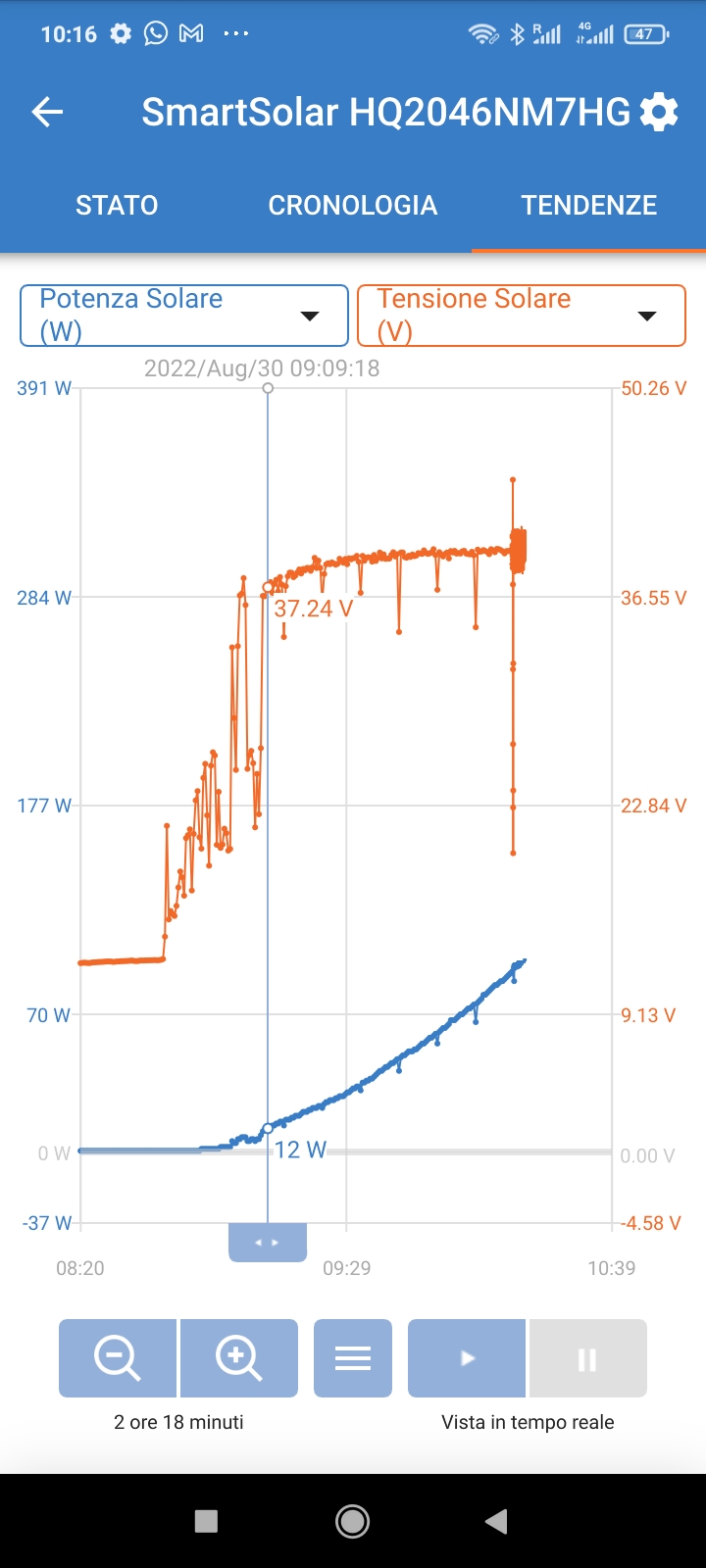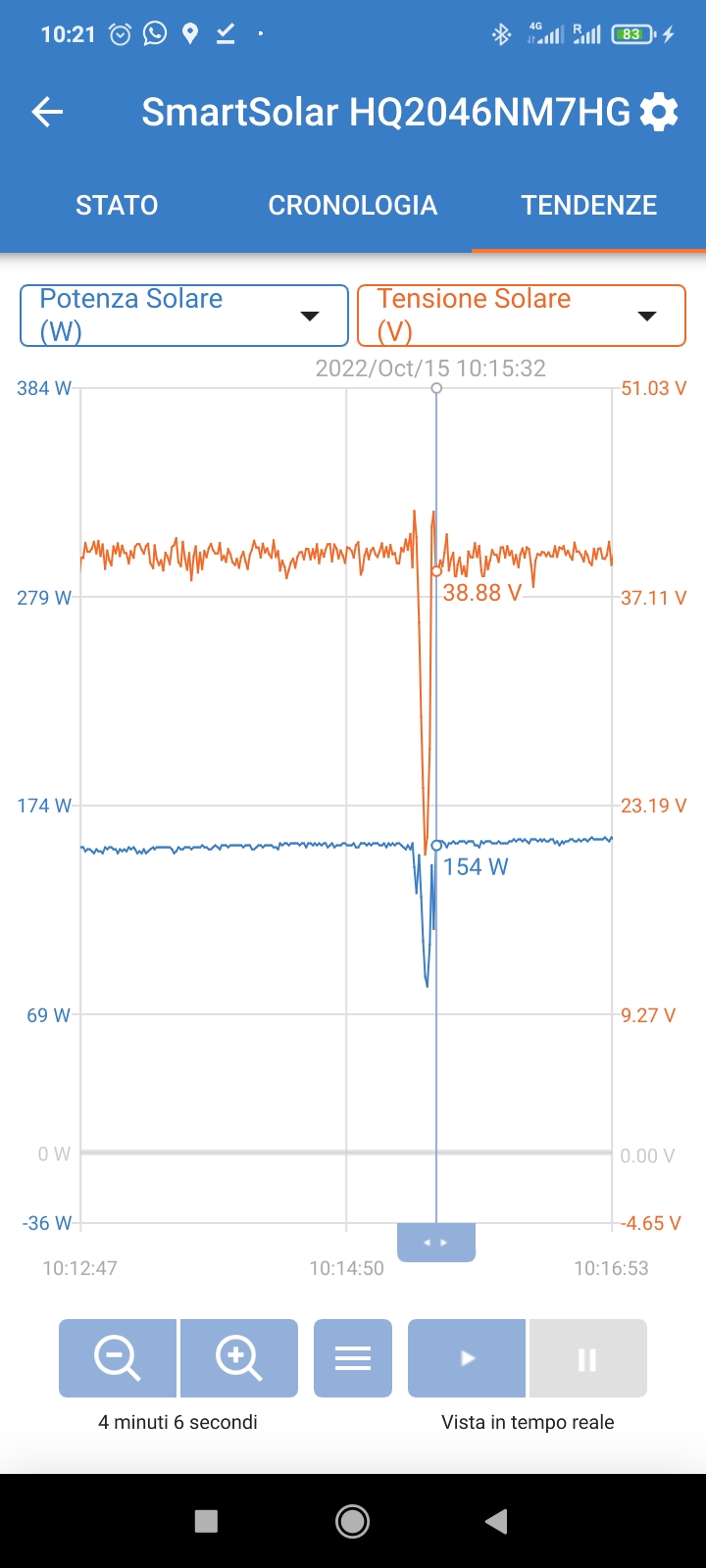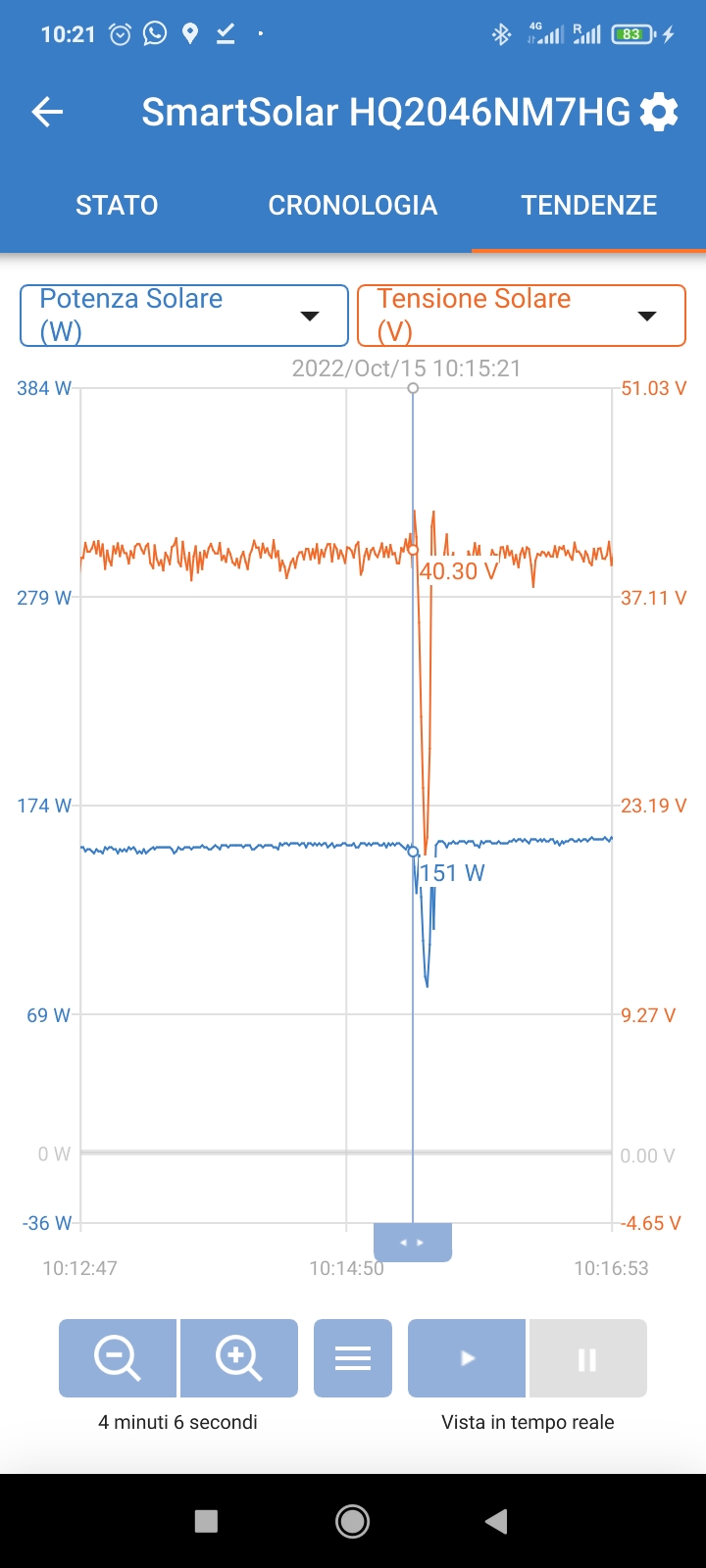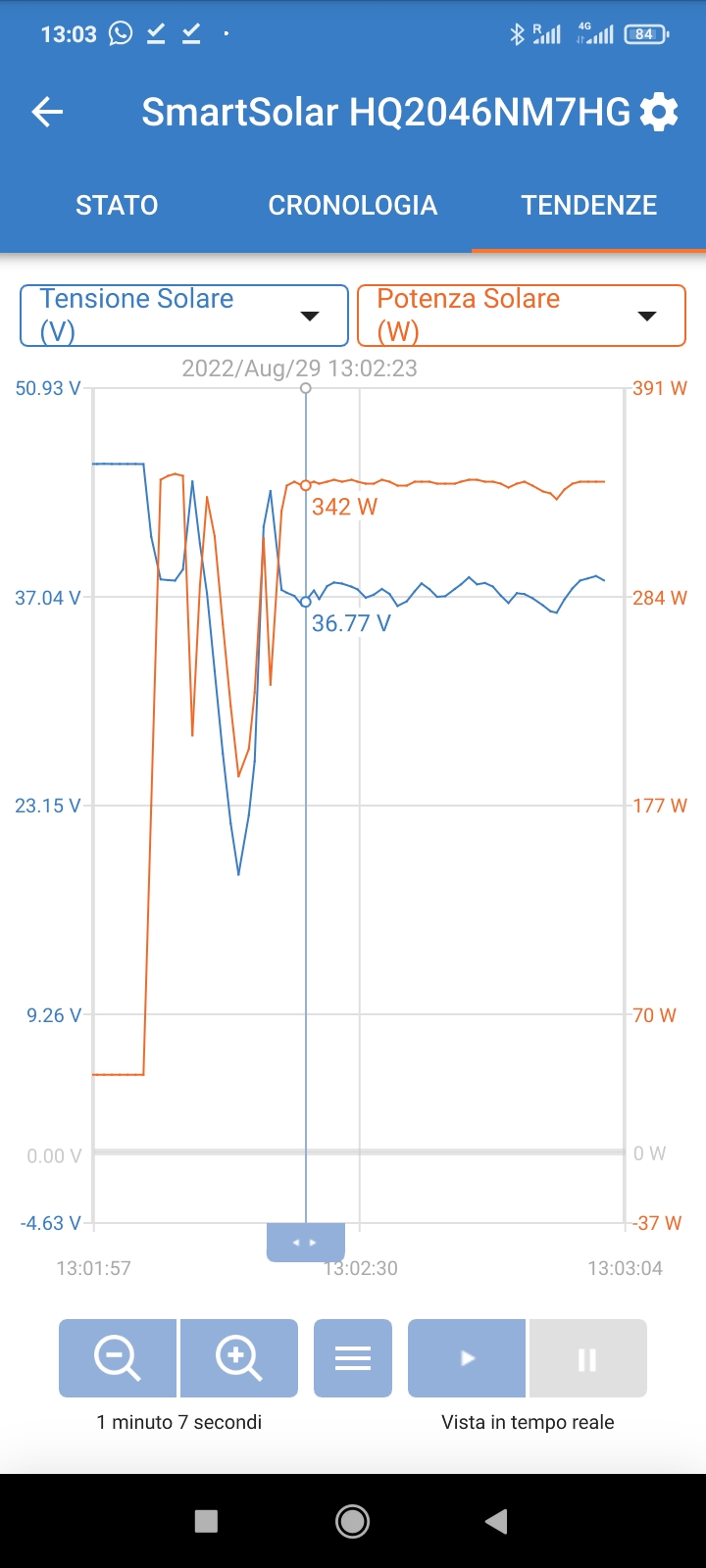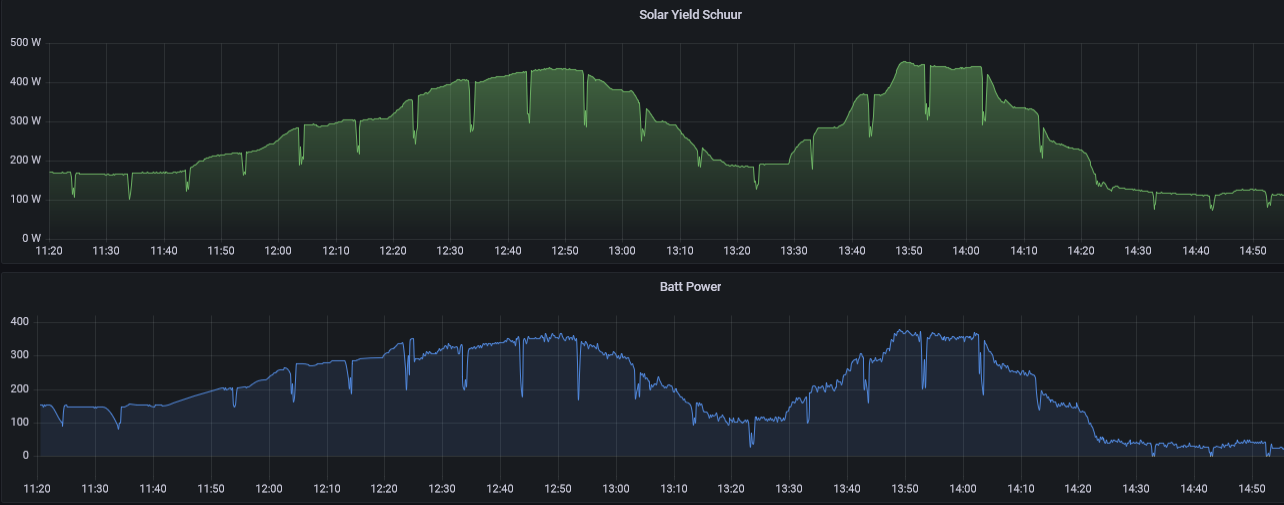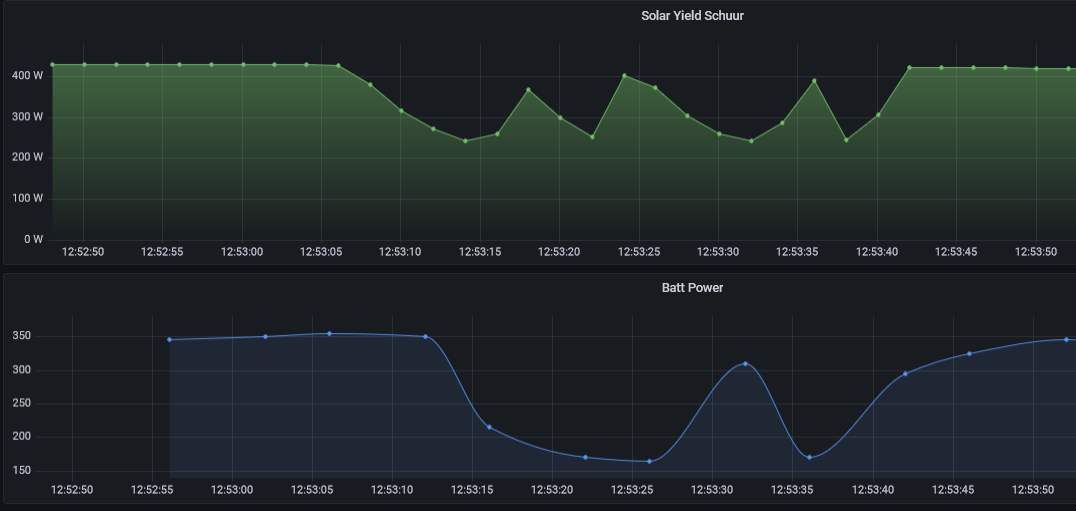We collect data from our Victron system and store it for analysis. Here you can see the power generation curve from our rooftop solar panels, connected to a Victron 100/50 solar charge controller.
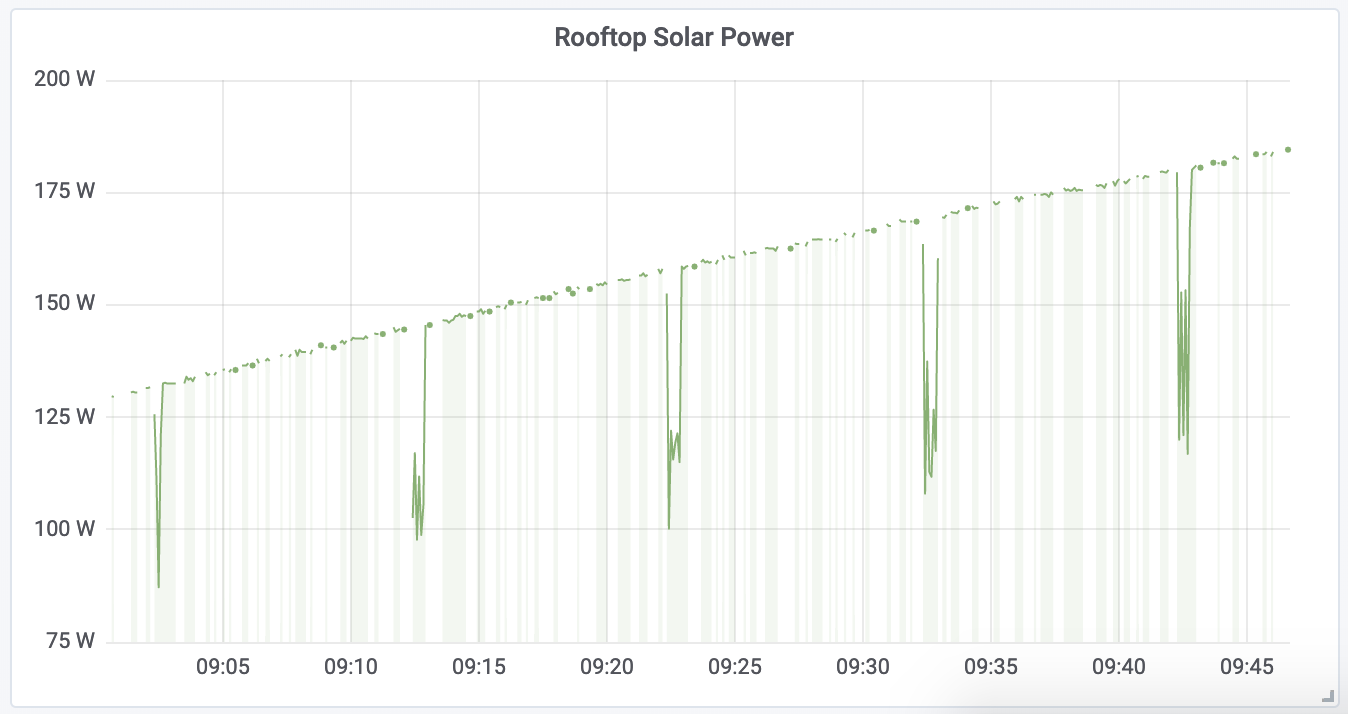
As you can see, every 10 minutes, the power drops off dramatically. I'm guessing this is the solar charge controller sweeping to find the Maximum Power Point.
Each of these "sweeps" takes ~33 seconds to complete, and during this time, power production decreases dramatically - the middle drop on the chart above is ~158W to ~120W average or so (about a 25% decrease). Power production after the sweep appears almost completely unchanged - looking at the PV input voltage, it reduced by ~0.18V (from 34.50V to 34.32V).
Treating this as a duty cycle and averaging over time, a 25% drop for 33 seconds every 10 minutes corresponds to roughly a 1.4% total drop in output.
Questions:
- Am I understanding the purpose of these drops correctly?
- Would the MPPT adjustment provide >1.4% improvement to output during the next 10 minutes?
- Is it possible / does it make sense to make the interval between these event adjustable - i.e. a user setting to change it?
Thanks,
Matt


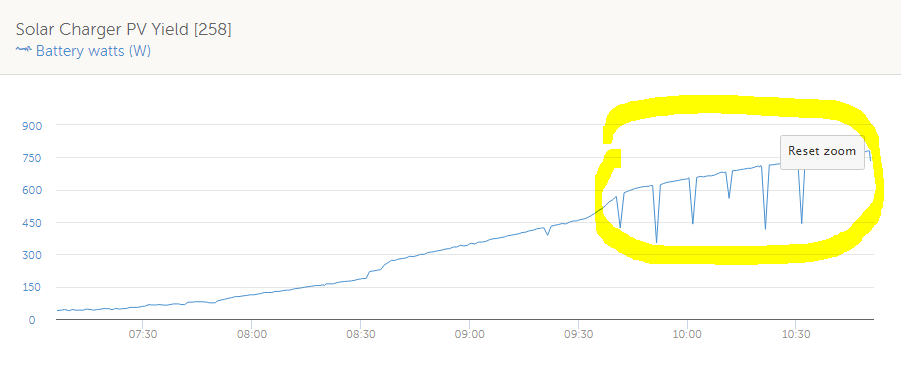
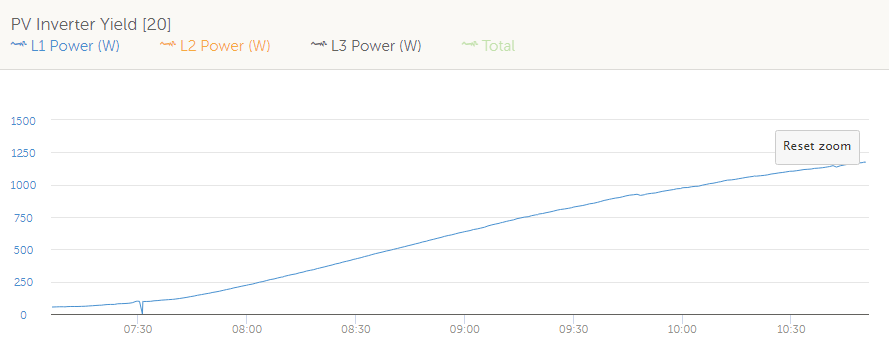
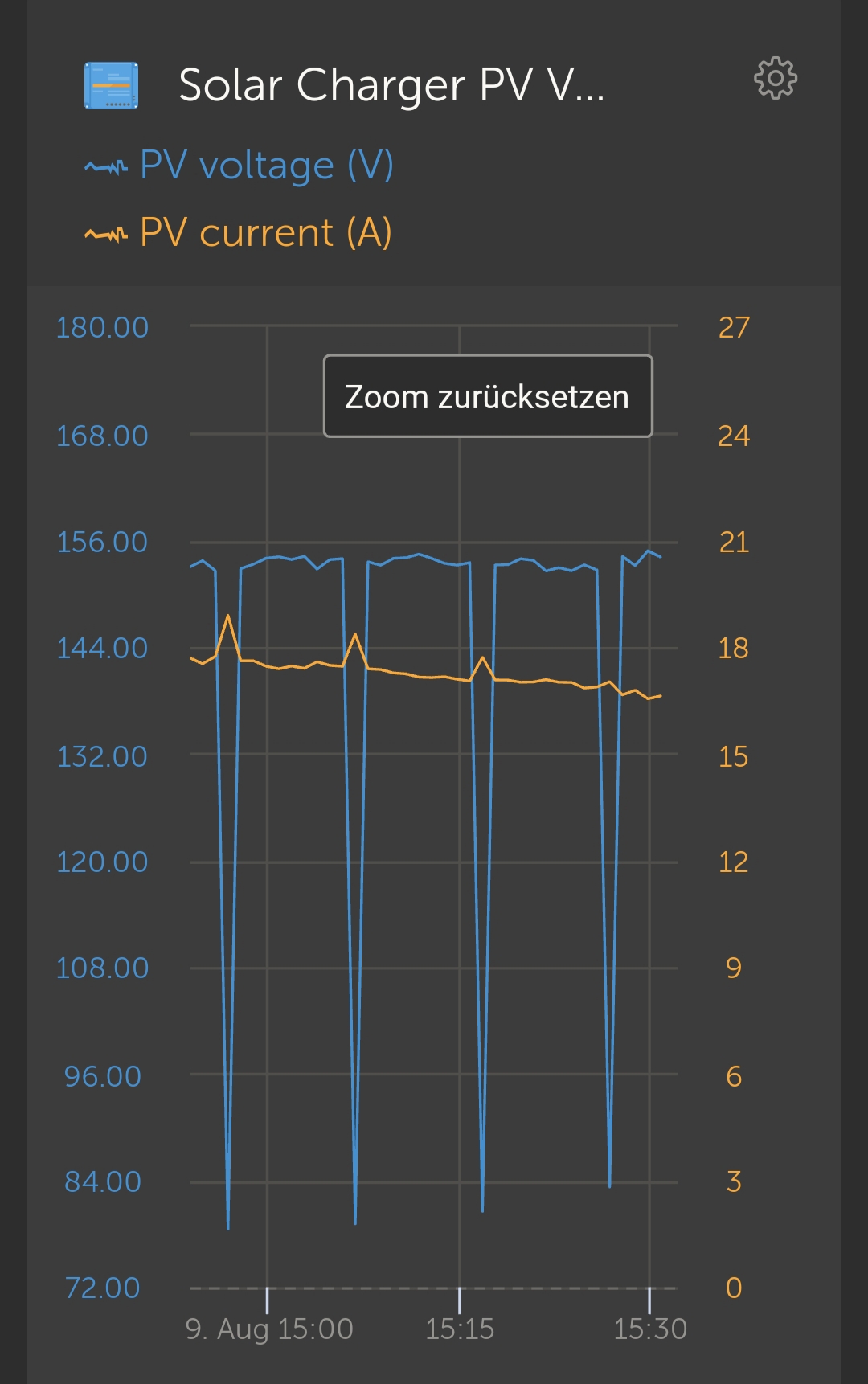 I would be very interested in a solution too. I have the same issue registered, when we have a day with totally blue sky. And my mppt drops about 1kW for the time of mpp tracking every 10 minutes. That brings my battery sometimes to switch from charge to discharge and my water heater is getting off when there is to low solar power
I would be very interested in a solution too. I have the same issue registered, when we have a day with totally blue sky. And my mppt drops about 1kW for the time of mpp tracking every 10 minutes. That brings my battery sometimes to switch from charge to discharge and my water heater is getting off when there is to low solar power 